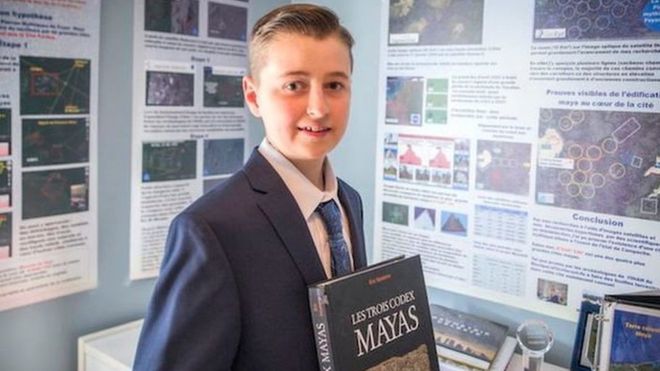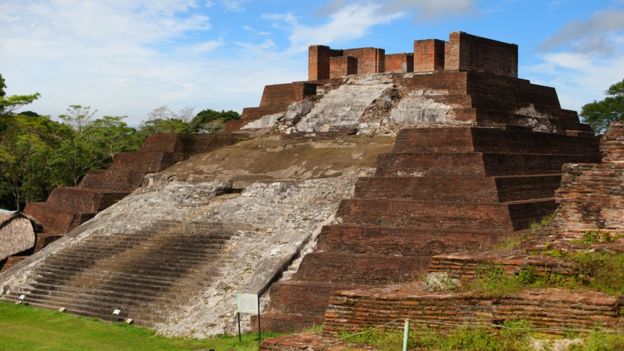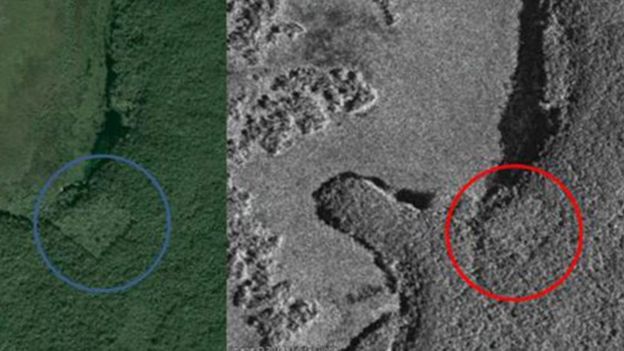BBC NEWS | | May 10, 2016

What was your biggest achievement at the age of 15? Well, a Canadian teenager has outshone the experts after discovering a lost Mayan city. William Gadoury, from Saint-Jean-de-Matha, Quebec, made the discovery by comparing star charts with satellite images. The new city, discovered in a Mexican jungle, is thought to be the fourth biggest Mayan city, and has been named ‘Mouth of Fire’ by the teenager.
The revelation went viral after a report on the findings was posted on Reddit – with hundreds of commenters amazed by the teenager’s discovery.

William has been fascinated by the Mayans for much of his childhood, ever since a Mayan calendar predicting the 2012 apocalypse sparked his interest.
His hobby eventually turned into serious research. The imaginative youngster theorised that the locations of Mayan cities might correspond to stars in Mayan constellations. He analysed 22 Mayan star maps from ancient books (known as the Madrid Codex), and overlaid the star positions onto Google Earth images of the Yucatan Peninsula. He was able to show that the 117 Mayan cities did indeed match the star positions, with the brightest stars representing more major cities.

William then overlaid a 23rd constellation, finding a discrepancy; three stars but only two known ancient cities. The location corresponding to the third star was on the Mexico-Belize border. But the as-yet undiscovered city was covered in thick vegetation, making his findings inconclusive.
Thankfully, the teenager had a close relationship with the Canadian Space Agency (CSA) – he had won a science competition a year earlier for his theory – and they had already been providing him with images from their RADARSAT-2 satellite; A 2 billion US dollar satellite with cutting-edge terrain mapping abilities. They gave him images of the new location.

man-made structure in the Yucatan Peninsula jungle.
Image courtesy of Canadian Space Agency
He also scoured the internet for other satellite images from 2005, when a fire had engulfed the area leaving it more exposed – and any remains more visible.
Armed with his images, he then collaborated with Remote Sensing expert Dr. Armand Larocque from the University of New Brunswick. By studying the satellite images and applying digital image processing a fascinating discovery was made; LaRocque proved that the 15 year old had found a major city with 30 buildings and an 86 metre pyramid.
His findings have been met with widespread praise, with scientists from the Canadian Space Agency describing his work as ‘exceptional’. They also presented him with a medal of merit.
William named the city K’ÀAK ‘CHI’ which means Mouth of Fire.
So what next for William? He plans to go to the International Science Fair in Brazil in 2017 to present his findings. He also hopes that archaeologists will visit the site of the 118th Mayan city very soon. On the possibility of an archaeological dig, Rocque is realistic, telling The Montreal Journal “It’s always about money. An expedition’s costs are horribly expensive”.
Regardless, William’s legacy will almost certainly be etched into history. The findings are soon to be published in a scientific journal, and it is thought that methods similar to his could lead to the discovery of more lost Mayan Cities.
Blog by Alex Dackevych










